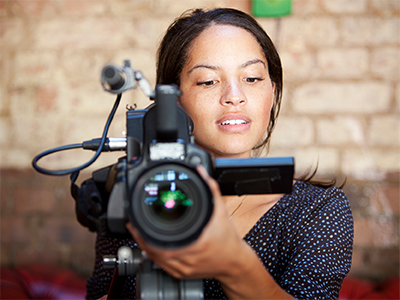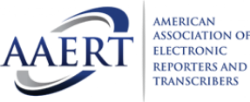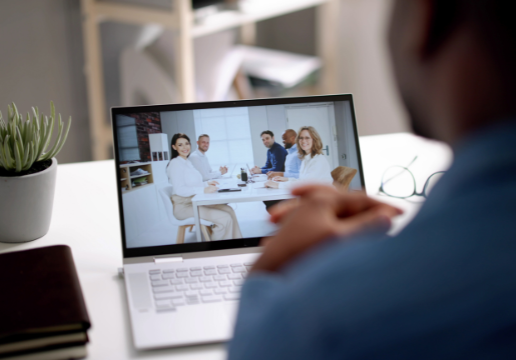How Legal Videography Assists in Preserving Vital Evidence for Litigation
How Legal Videography Assists in Preserving Vital Evidence for Litigation
Blog Article
Why Legal Videography Is Crucial for Accurate Court Recordings
The function of lawful videography in courtroom setups can not be overemphasized, as it works as an essential device for preserving the stability of court records. By catching both verbal and non-verbal interaction, it boosts the clearness of witness testimonies and reflects the subtleties of courtroom communications. This comprehensive paperwork not only help in decreasing prospective misunderstandings yet also supports appellate testimonials, consequently strengthening the judicial procedure. Nevertheless, the ramifications of incorporating lawful videography into basic court room methods raise important concerns about its broader influence on the legal system. What might these ramifications require?
Importance of Visual Evidence
In the realm of lawful proceedings, the importance of visual proof can not be overstated. Visual evidence acts as a powerful tool in developing facts, corroborating testimonies, and improving the general quality of a case. This kind of proof, which consists of pictures, video clips, and diagrams, can offer a concrete context that spoken summaries often lack, therefore providing juries and courts a more clear understanding of the conditions surrounding an instance.
Furthermore, visual proof help in the retention of information. Human cognition is inherently aesthetic, and individuals are a lot more likely to bear in mind and comprehend details offered in an aesthetic style. In the court room, this can be vital, as compelling aesthetic proof can persuade opinions and strengthen the narrative offered by lawful reps.
Furthermore, making use of visual evidence can minimize misunderstandings and obscurities that often develop from verbal exchanges. By giving a straight depiction of events, aesthetic evidence assists to get rid of subjective analyses and fosters a much more objective evaluation of the truths. As a result, the assimilation of aesthetic evidence right into lawful process not just enhances the stability of the judicial process but also improves the chance of attaining a simply outcome.
Catching Non-Verbal Hints
Utilizing advanced videography techniques can significantly improve the capture of non-verbal cues during lawful proceedings. Non-verbal communication, consisting of faces, body language, and eye contact, plays a crucial role in sharing feelings and intents that might not be explicitly mentioned in verbal testament. legal videography. Lawful videography employs high-def cams and critical angles to make sure that these subtle cues are videotaped with clarity and precision
The capability to examine non-verbal actions can give useful context to statements made throughout court sessions. For circumstances, a witness's reluctance or self-confidence can be analyzed through their position or gestures, possibly influencing the court's perception of reliability. The use of close-up shots can assist concentrate on a speaker's expressions, allowing for a more nuanced understanding of the testament.
Moreover, integrating numerous electronic camera angles can produce a comprehensive view of interactions, highlighting dynamics in between parties entailed. This multifaceted strategy not only enhances the precision of the court record however also aids in preserving the honesty of the judicial process - legal videography. Eventually, capturing non-verbal cues with legal videography cultivates a richer, much more complete depiction of court procedures

Enhancing Testimony Dependability
The dependability of testament can be considerably reinforced through making use of top quality legal videography. Video clip recordings work as an unbiased tool that catches not only the spoken words of witnesses yet also the subtleties of their distribution, including tone, pacing, and psychological expressiveness. This multifaceted documents gives a clearer understanding of the witness's reputation and purposes, which can be pivotal in legal proceedings.
In addition, lawful videography decreases the capacity for misinterpretations that may develop from composed transcripts alone. When jurors can observe a witness's behavior and body language combined with their testament, they are much better equipped to evaluate the authenticity and reliability of the evidence provided. This aesthetic context can strengthen the testimonial story, making it extra engaging and legitimate.
In addition, the presence of a video recording can prevent possible incongruities in testimony. Witnesses may be much more careful in their declarations when they recognize they are being videotaped, resulting in more precise and sincere accounts. On the whole, high-quality legal videography enhances the stability of statement, making sure that the court has accessibility to a Home Page total and sincere depiction of the truths as shared by the witnesses.
Sustaining Appeals and Reviews
Lawful videography plays a crucial duty in sustaining allures and reviews by providing a comprehensive visual record of court room process. This visual documents catches not just the spoken words of witnesses and attorneys yet additionally the subtleties of body movement, tone of voice, and courtroom dynamics. Such components can be crucial in recognizing the context of testimonies and arguments offered.
In the appellate procedure, where the focus is on mistakes of legislation and procedural fairness, a video clip record can act as a vital device for appellate courts. It allows judges to review the initial trial context, guaranteeing that choices are based upon a total understanding of the proceedings. The capability to visually analyze the temperament of witnesses or the communications between events can expose insights that composed transcripts might neglect.

Furthermore, legal videography can help in clarifying obscurities in statements or step-by-step judgments, thus reinforcing the basis for an allure. By supplying a trustworthy, objective account of what taken place in court, legal videography not only supports the integrity of the lawful procedure yet additionally encourages all events included to make informed decisions regarding their cases.
Simplifying Court Room Procedures
Enhancing courtroom effectiveness, legal videography simplifies processes by giving prompt accessibility to aesthetic documents of procedures. This innovation enables judges, attorneys, and courts to take another look at crucial statement and evidence, making sure that all events have a clear understanding of the instance. By recording the subtleties of spoken and non-verbal interaction, videography improves the document, making it less complicated to grasp the context and weight of testimonies.

In addition, video recordings can promote remote engagement in hearings, enabling for greater adaptability in scheduling and participation, which is specifically important in intricate situations involving numerous stakeholders.
Final Thought
Finally, lawful videography plays a crucial role in making certain precise court recordings by providing crucial visual proof that captures both spoken and non-verbal communication. This technique improves the integrity of testaments, supports appellate testimonials, and improves court room processes. By go to the website cultivating an extensive description understanding of court room dynamics, lawful videography ultimately adds to much more fair judicial results, strengthening the honesty of the legal system and assisting in informed decision-making.
Report this page